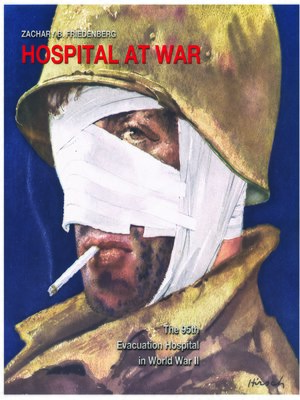Hospital at War
ebook ∣ The 95th Evacuation Hospital in World War II · Williams-Ford Texas A&M University Military History Series
By Zachary Friedenberg

Sign up to save your library
With an OverDrive account, you can save your favorite libraries for at-a-glance information about availability. Find out more about OverDrive accounts.
Find this title in Libby, the library reading app by OverDrive.



Search for a digital library with this title
Title found at these libraries:
| Loading... |
During World War II, the army established 107 evacuation hospitals to care for the wounded and sick in theaters around the world. An evacuation hospital was a forward hospital accepting patients from the battlefield. It was where the wounded first received definitive care.
Formed at Camp Breckenridge, the 95th Evac arrived in Casablanca in April 1943, with seven thousand troops, thirty doctors, and forty nurses. First pitching their tents at Oujda, they moved eastward toward Algeria before making a D-day landing on the beaches of Salerno, Italy, on September 9, 1939. Shortly thereafter, they entered Naples, then set up shop at Anzio before moving on to become the first American hospital to penetrate Nazi-occupied Europe. After the guns were silent, records show that these doctors and nurses had treated over 42,000 Americans in almost all the critical battles of the European theater: Salerno, Monetcassino, Anzio, southern France, the Battle of the Bulge, the Rhineland, and finally, the invasion into Germany.
Hospital at War is the story of the 95th Evac Hospital as told by Zachary Friedenberg, a young surgeon at the time, fresh out of his internship. He tells the story of how the men and women of the 95th survived the war. He describes how they solved problems and learned to treat the war-wounded in the extreme heat of North Africa and during the frigid winters of the Rhineland. He tells how they endured shelling and a bombing of the hospital and how they adjusted to the people and the countries in which they worked.
By the end of their two-year tour of duty, the men and women of the 95th Evac were superbly efficient. A casualty who made it to their facilities had a 99 percent chance of surviving. For anyone who wants to know how so many of our boys made it home despite horrific injuries, this book provides part of the answer.






